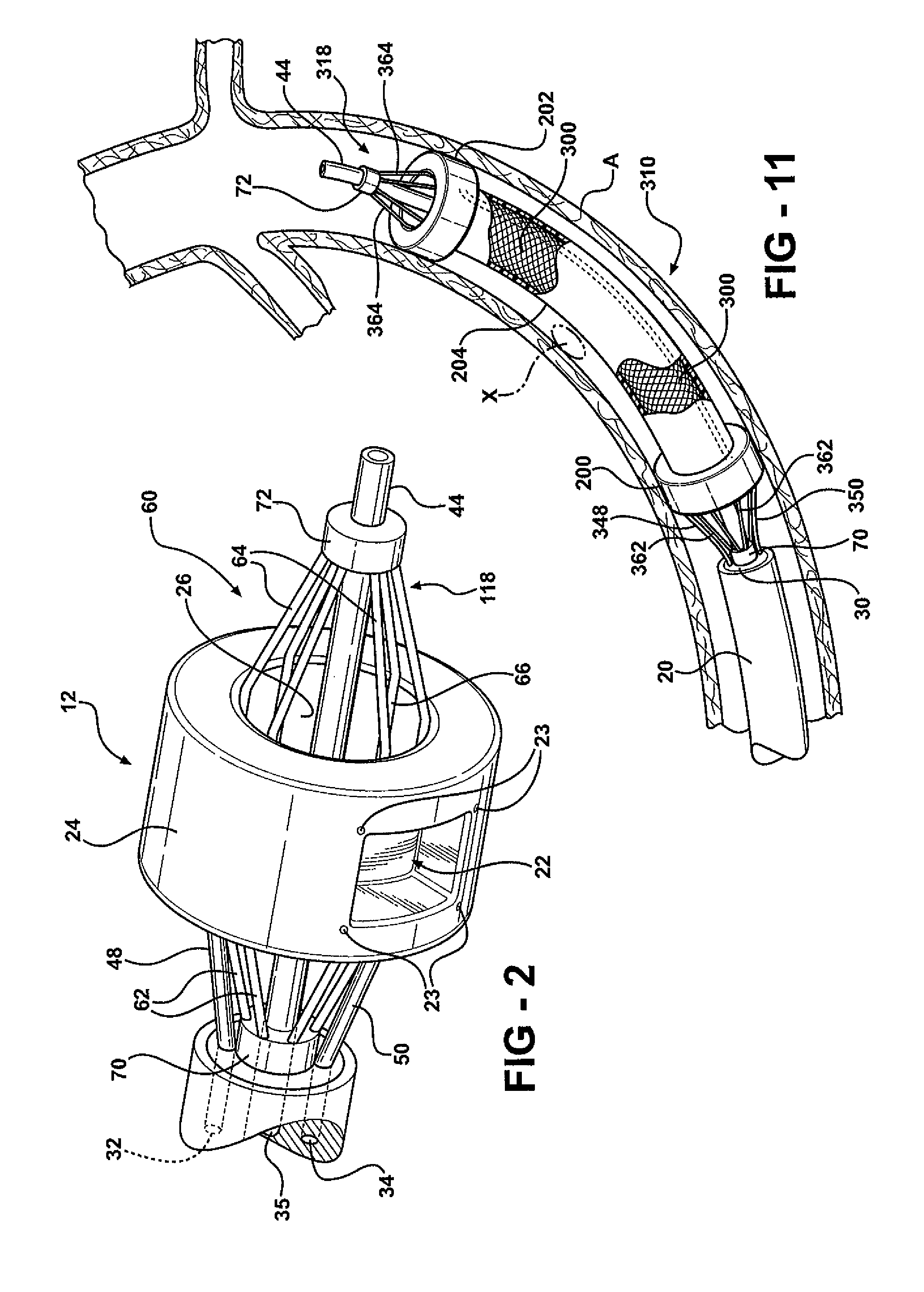Clampless anastomotic device
an anastomotic device and clamping technology, applied in the field of medical devices, can solve the problems of ischemia of downstream organs, risk of aorta injury, and the act of placing occlusive clamps across the aorta, and achieve the effects of less “afterload” resistance, less ischemia, and convenient minimally invasive techniques
- Summary
- Abstract
- Description
- Claims
- Application Information
AI Technical Summary
Benefits of technology
Problems solved by technology
Method used
Image
Examples
Embodiment Construction
[0029]Referring to the Figures, wherein like numerals indicate like or corresponding parts throughout the several views, a device adapted for selectively occluding blood flow at a target site in a blood vessel while still maintaining blood flow through the blood vessel is generally shown at 10. The device 10 is particularly adapted for providing a working space in an aorta that is free of blood flow to perform an anastomosis, while still maintaining a significant amount of blood flow through the aorta. Arrows in FIG. 1 generally indicate blood flow. In FIG. 1, the device 10 is shown occluding blood flow from a target site X in a blood vessel, such as a thoracic or abdominal aorta A, to facilitate an end-to-side anastomosis of another blood vessel B to the aorta A. It should be appreciated that other uses of the device may be contemplated.
[0030]Referring to FIGS. 1-9, the device 10 comprises an occluding member 12, a catheter assembly 14 for endolumenal deployment of the occluding me...
PUM
 Login to View More
Login to View More Abstract
Description
Claims
Application Information
 Login to View More
Login to View More - R&D
- Intellectual Property
- Life Sciences
- Materials
- Tech Scout
- Unparalleled Data Quality
- Higher Quality Content
- 60% Fewer Hallucinations
Browse by: Latest US Patents, China's latest patents, Technical Efficacy Thesaurus, Application Domain, Technology Topic, Popular Technical Reports.
© 2025 PatSnap. All rights reserved.Legal|Privacy policy|Modern Slavery Act Transparency Statement|Sitemap|About US| Contact US: help@patsnap.com



